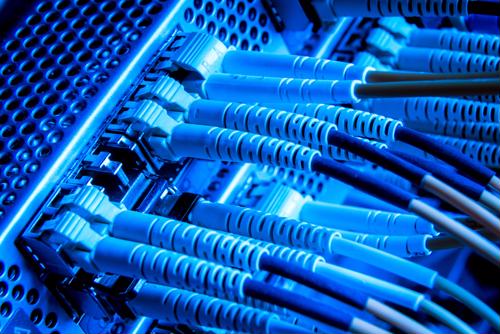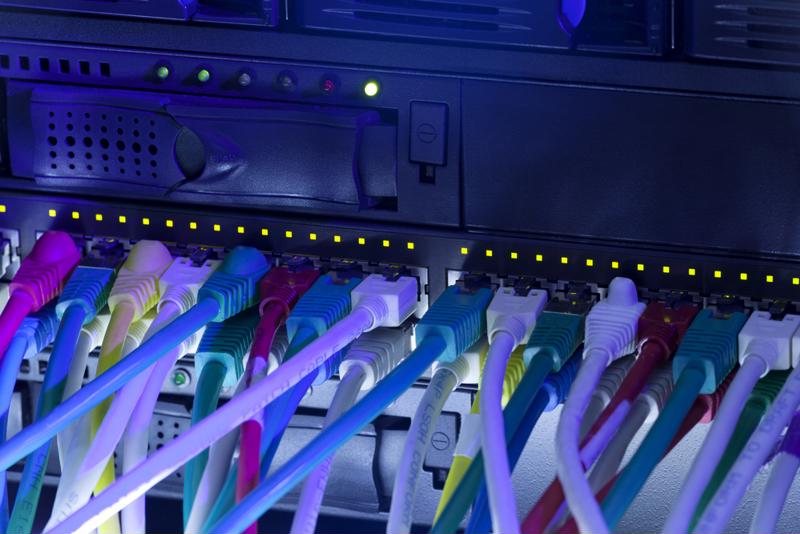
3 situations where copper and fiber both make sense in the data center
By Max BurkhalterMarch 9, 2016
Fiber-optic cabling systems have become prominent enough that they are no longer the ultra-expensive network silver bullet that they were once billed as. However, there is a general awareness across the data center industry that fiber does offer distinct advantages over copper. However, 10GBASE-T and even 100GBASE-T capabilities have established a foundation for high-performance copper cabling to have a long life in the data center. The competition between these two cable formats leaves data center leaders with a difficult choice - when is it best to use fiber and when should I stick with copper?
The answer, of course, depends highly on your specific context. However, there are a few signs that your data center may be a good candidate as a place to mix-and-match fiber and copper. Fiber-to-Ethernet media converters make this a fairly cost-efficient process, and mixing the two cable types lets you take advantage of the best features of both solutions. Three situations in which you should consider mixing-and-matching copper and fiber include:
1. Cable ducts are running out of space
Cable ducts are a bit like the arteries of your data center. As you fill them with wires connecting to various network access points, you increase the flexibility and bandwidth potential of your network. In particular, having sufficient cabling capacity running through ducts helps you avoid bottlenecks. However, cable ducts and trays have a limited capacity. Over time, additions to the network to support rising bandwidth demands or adjustments to your connectivity architectures lead to more and more cables taking up space.

Balancing copper and fiber can solve many data center network challenges.
As cable trays and ducts fill, airflow throughout the facility starts to become limited. Furthermore, cables can become disorganized and tangled, creating a potential hazard - especially if an overburdened cable tray breaks during an emergency. Creating network links that incorporate fiber running through cable ducts and trays attached to copper through media converters at the ends of the cable run can reduce the amount of wiring needed in the trays and ducts themselves.
2. Bottlenecks are emerging
Virtualization is creating many network challenges across data center environments, with bottlenecks high up on the list. At its core, virtualization involves increasing the utilization rate of servers by partitioning system resources across multiple virtual machines. This means that more data is moving into and out of a server as it operates as, for example, 65 percent of its full capacity instead of 25 percent. However, physical servers still usually only have a single network port and structured cabling schemes do not accommodate for the added data density of virtualized environment.
Using advanced copper cabling systems can help you overcome many of these performance challenges, but most copper standards eventually involve bundling cables to achieve high-performance standards, leading to bulky cable links that are difficult to manage. What's more, the rising data density created by virtualization often leads to bottlenecks at key points between various layers or segments of the data center network.
Fiber enables you to alleviate issues created when data moves fine through most of your network, but gets bogged down in a couple of small areas. Introducing fiber links at these interconnect points can accelerate data transmission and make it easier to get information where it needs to go without running into problems.
3. Energy costs are becoming a problem
One fiber-optic cable can usually do the work of a bundle of copper cables. This matters in data centers where airflow is key. Technology leaders are often doing whatever they can to minimize costs in data centers, and that usually means finding ways to optimize airflow to get hot air away from servers in the most efficient way possible. This also includes getting cool air to servers. Cables can play a critical role in this process.
"One fiber-optic cable can usually do the work of a bundle of copper cables."
As wires take up space within server racks, in cable trays or - in some cases - within segments of raised floor space, they limit the way air can move through the facility. This can make it incredibly difficult to get cold air to equipment or hot air away from it. As such, exhaust fans end up running at higher speeds, ramping up the amount of power used by the data center. At the same time, chillers end up running more frequently to get enough cool air into the facility, creating more demand for electricity.
Integrating more fiber-optic cabling into your network can reduce the number of cables that you need to get data to machines, making it easier to manage airflow throughout the building and keeping your electricity costs under control.
Making a mixed environment possible
Media converters play an essential role in using fiber and copper in tandem. The different signal types between the cabling formats make conversion necessary, but leading solutions get the job done reliably without compromising the security or performance of your network.
Perle has an extensive range of Managed and Unmanaged Fiber Media Converters to extended copper-based Ethernet equipment over a fiber optic link, multimode to multimode and multimode to single mode fiber up to 160km.



